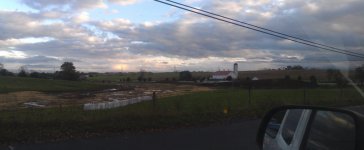salmonoid
Well-known member
- Joined
- Jun 19, 2007
- Messages
- 2,711
I drove past this project last Sunday before I knew what was going on, and wandered what the heck WAS going on. I knew route 222 has been horrible for construction this year - bridge work, paving, and the construction of a church right beside this stream, but I couldn't imagine how in the world anyone could get away with such massive upheaval of a flood plain. Then, I found out its some sort of pilot stream restoration. What do you think - will the stream end up in a few years in the same place it started before the project? Will nutrients in the sediment removed still leach when whoever buys the topsoil moves the problem to their back yard?
Here is the article about the legacy sediment stream cleanup.
Here is the article about the legacy sediment stream cleanup.




